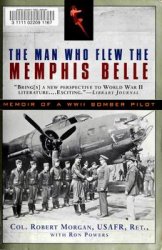On June 6, 1940, as the French armies collapsed under the German attack, Maj. Gen. Charles de Gaulle was called ftom command of his armored division to become Under-Secretary for National Defense and War. Twelve days later, as the French government also collapsed, de Gaulle fled to London, where he announced his intention to fight on, denouncing the armistice with Germany and the Petain government, and appointing himself as leader of a National Committee of Liberation. By November 1942, when the Germans occupied Vichy France, de Gaulle’s position as leader of the Free French - renamed the Fighting French in August 1943 - was reasonably secure, but his utterly uncompromising approach meant that for the rest of the war his relations with the British and Americans were difficult. The central problem, as the date of the invasion drew closer, was that de Gaulle claimed the right to assume the government of France upon liberation, whereas the Americans and British insisted on some form of election being held before recognizing that government. To de Gaulle, this was insulting and presumptuous, as was the Allies’ issuing of “liberation money “ to their troops without his authorization. A private understanding with Eisenhower helped ease the situation.
In 1944 most of de Gaulle’s forces were in Italy or being prepared for the Dragoon landings as the French First Army, but it was obviously politically important for French troops to take part on D-Day. The French cruisers Montcalm and Georges Leygues and the destroyer La Combattante formed part of Adm. Ramsay’s command on D-Day, while 2nd Tactical Air Force included five RAF Fighting French squadrons. Two French, parachute battalions were serving with the British Special Air Service Brigade (SAS), and dropped three nine-man combat teams into Brittany on the night before D-Day. In order to have French troops land with the first wave on D-Day itself, a token force of 176 French commandos from No. 10 (Inter-Allied) Commando under Commandant Phillippe de Vais-seau Kieffer was transferred to No. 4 Commando to land at Beach. De Gaulle also provided 2nd French Armored Division (armed and equipped by the Americans) as part of the SHAEF forces intended for Normandy, with the specific role of liberating Paris. Its commander, Maj. Gen. Jacques-Philippe Leclerc, had escaped from a German prisoner of war camp in 1940 to join de Gaulle. Described as “a modern d’Artagnan,” he was actually the Vicomte de Hautecloque, but had taken the name “Leclerc” to protect his family, still living in France.
As part of the D-Day plans, attempts were made to coordinate the various French resistance groups, known as the “Secret Army.” Although the main function of the Resistance was to provide information for the landings, some groups were also given specific sabotage targets to slow the Germans down. In December 1943 the British SOE and the American Office of Strategic Services (OSS) created a single Special Forces Headquarters as part of SHAEF, and in May 1944 de Gaulle’s chief of staff, Gen. Joseph Pierre Koenig, was appointed commander of the French Forces of the Interior (FFI) under which all resistance groups were placed, giving them some official status as soldiers rather than irregulars (or, as the Germans insisted, “terrorists”). The various factions of the Resistance were by no means all automatically loyal to de Gaulle, who in turn was prepared to take British and American arms and supplies for his own resistance groups, but not to recognise the work of the SOE and OSS. Neither de Gaulle nor Koenig was involved in the strategic planning for Overlord, and in April the British government blocked the movement of all diplomats or diplomatic correspondence into or out of the United Kingdom, making exception only for the Americans and Russians. As a result, de Gaulle — increasingly angry over the Anglo-American refusal to recognize his government — refused to take part in joint radio broadcasts with the other allied leaders on D-Day, insisting on his own broadcast in which he mentioned only French Forces.




 World History
World History









